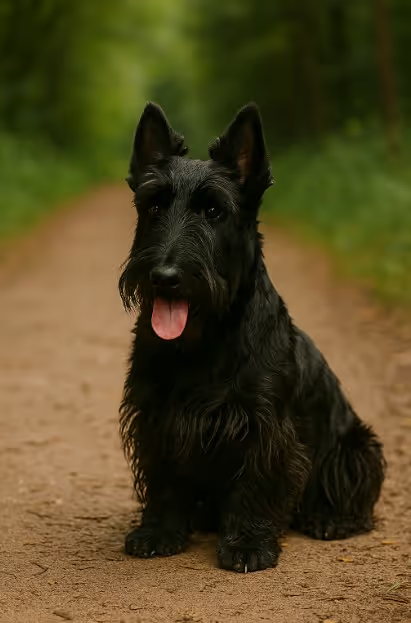The Scottish Terrier, affectionately known as the “Scottie,” is a dignified, independent, and confident small dog with a big personality. Recognizable for its distinctive beard, wiry coat, and sturdy build, the Scottie is both a loyal family companion and a determined little hunter. Originally bred to work independently, the Scottish Terrier is intelligent, spirited, and sometimes stubborn—making them best suited for owners who appreciate their charming, self-assured nature.

The Scottish Terrier has its origins in Scotland, where it was bred to hunt and dispatch vermin such as rats, foxes, and badgers. Known for working independently and without hesitation, the breed was developed in the rugged Scottish Highlands during the 1700s and 1800s. By the late 19th century, the Scottie had been refined into the distinct breed we know today. They became popular with British and American nobility and even served as mascots for political figures. Today, they remain one of the most recognizable and beloved terrier breeds worldwide.
A compact, sturdy, and low-to-the-ground terrier with a distinctive outline.
The Scottie’s wiry coat requires regular maintenance to keep it in top condition.
Scotties are moderately active and benefit from daily exercise.
Smart but independent-minded, Scotties require consistent, positive training.
Proper portion control is key for maintaining a healthy weight.
Generally healthy but prone to a few breed-specific issues.
Scottish Terriers are available through breeders and rescue organizations.
Are Scottish Terriers good apartment dogs?
Yes, they adapt well to smaller homes if exercised daily.
Do Scottish Terriers bark a lot?
They can be vocal, especially as alert watchdogs.
Are they good with kids?
They do best with respectful, older children.
Do Scotties shed?
They shed minimally with regular grooming.
Are Scotties easy to train?
Yes, but they require patience and consistency due to their independent nature.
Do they get along with other pets?
They can, with socialization, but may chase smaller animals.
How much grooming do they need?
Weekly brushing and periodic hand-stripping are essential.